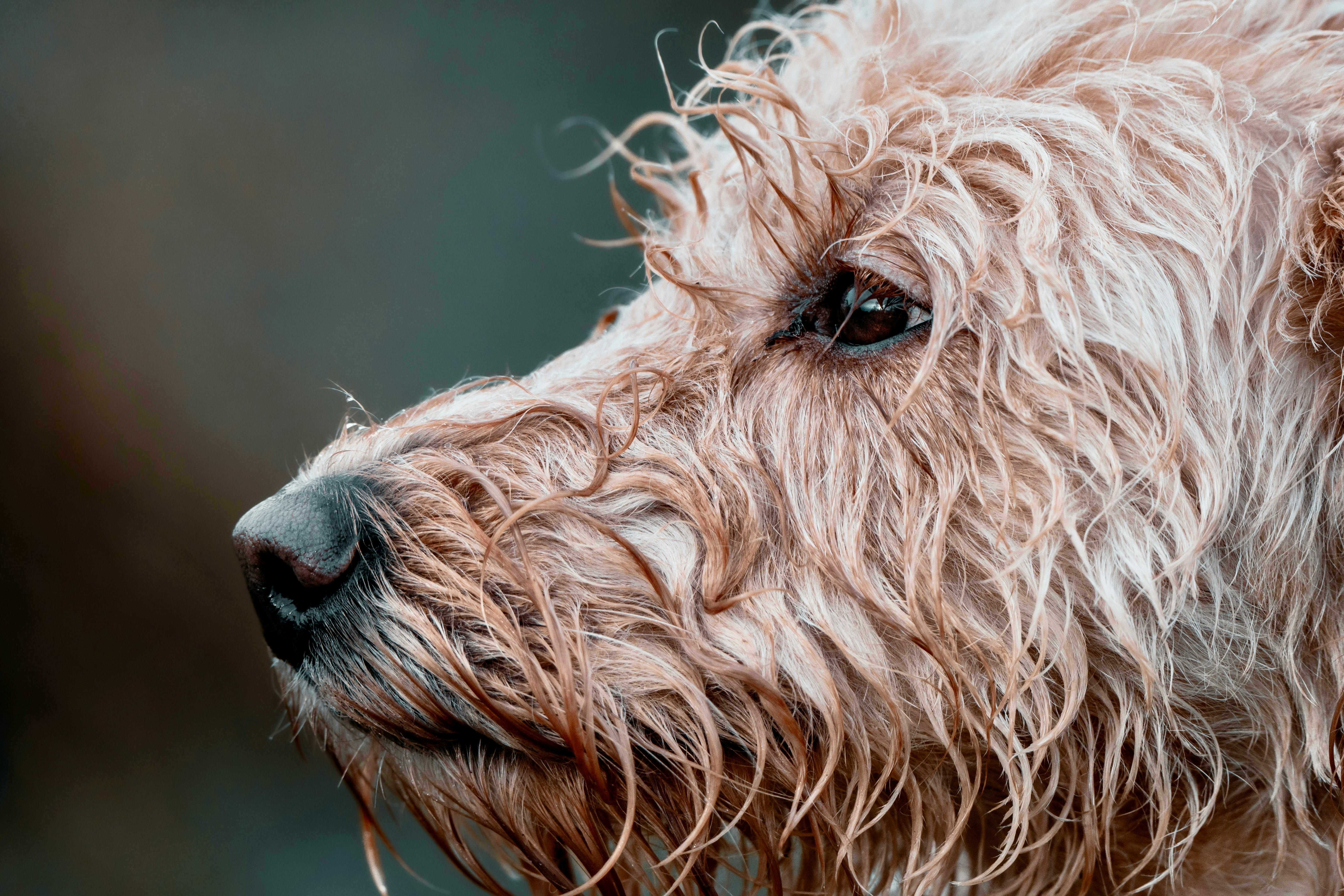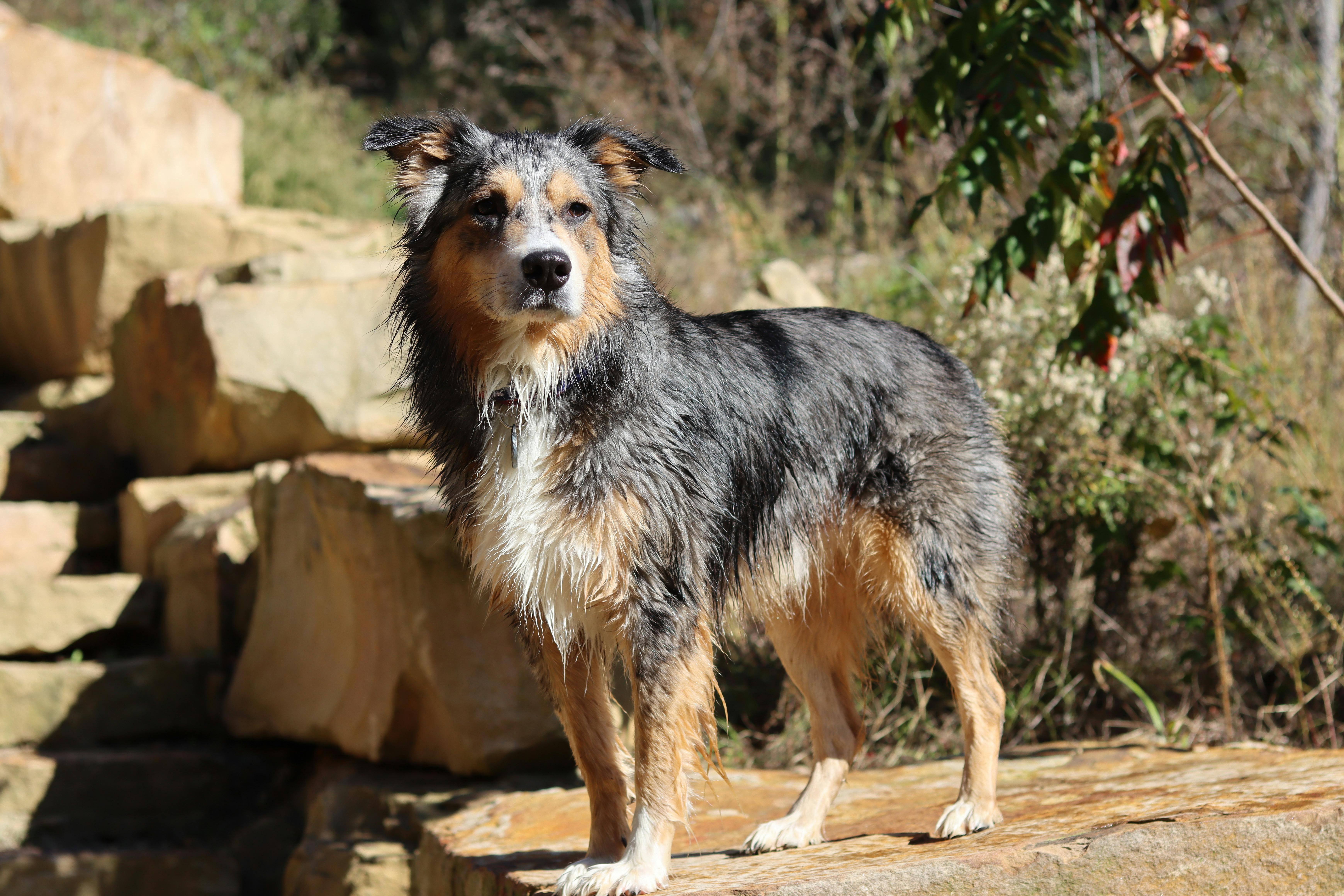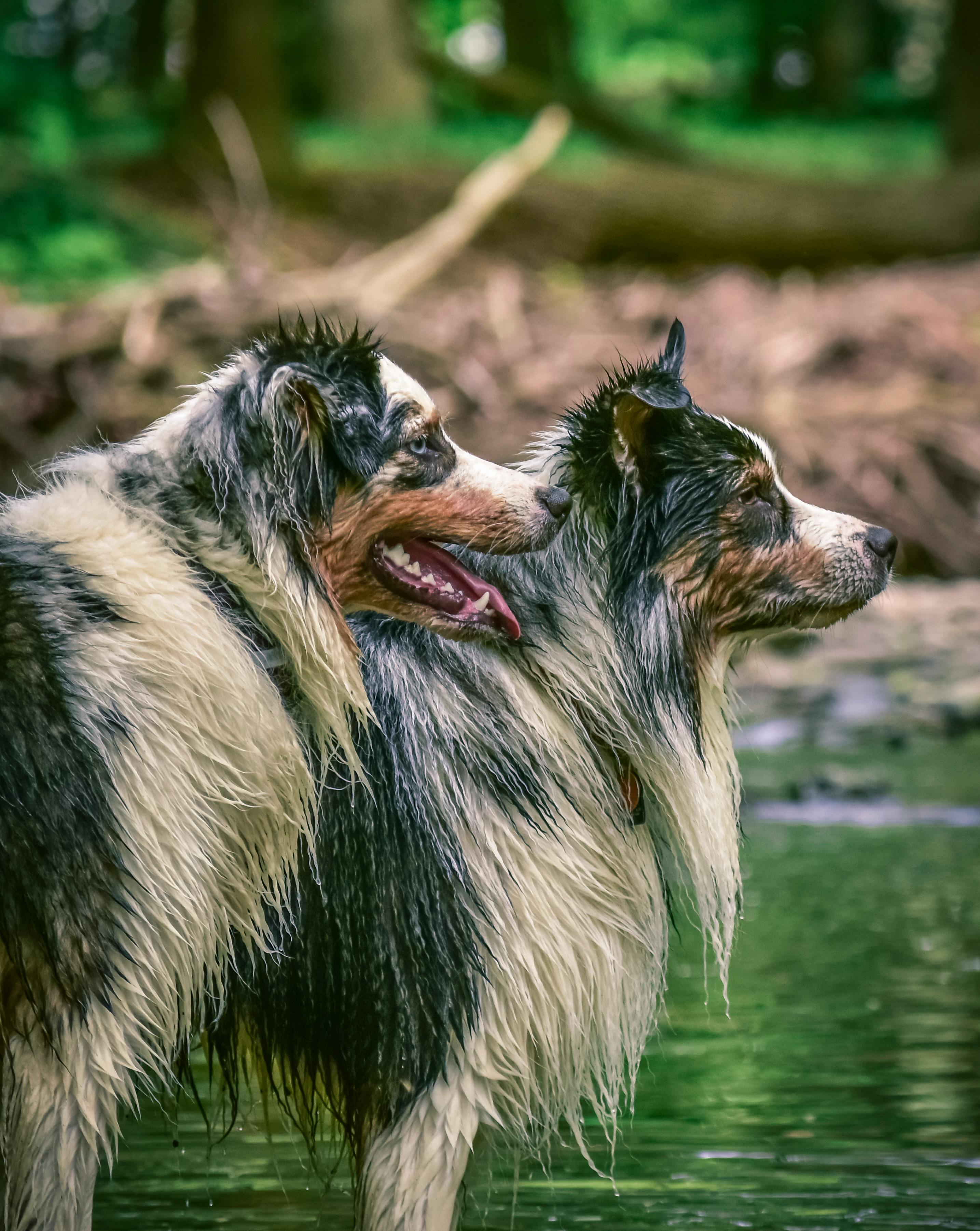Have you ever wondered, why do dogs have wet noses? This seemingly simple question hides a world of fascinating reasons that reveal just how remarkable our furry friends truly are! A dog’s nose isn’t just a cute feature; it’s actually packed with sensitive receptors that help them explore their environment. But what makes their noses wet? Is it just for show, or is there a deeper purpose? In this article, we will dive into the intriguing science behind those moist noses, uncovering the reasons why dogs’ noses are not only cool to the touch but also essential for their health and well-being. Did you know that a wet nose could indicate a dog’s emotional state or even their overall health? As we explore the role of a dog’s nose in communication and sensory perception, you’ll discover insights that might just change the way you view your beloved pet. So, are you ready to learn more about this captivating topic? Let’s embark on a journey to answer the question: why do dogs have wet noses and what it means for their lives!
The Science Behind a Dog’s Wet Nose: Why It Matters for Their Health

When you think about dogs, one of the most endearing features they have is their wet noses. But have you ever wondered why do dogs have wet noses? This simple yet fascinating question opens a window into understanding canine health and behavior. It’s not just a quirk of nature; there are significant reasons behind it that relate to their senses and overall well-being. Let’s dive into the science behind a dog’s wet nose and why it’s important for their health.
The Anatomy of a Dog’s Nose
To understand why dogs have wet noses, it’s essential to look at the anatomy of their snouts. Dogs’ noses contain a complex structure of tissues, receptors, and glands that work together to help them smell. The wetness often comes from mucous secretions that help them absorb scent molecules. Here’s a breakdown of some important components:
- Olfactory receptors: Dogs have up to 300 million olfactory receptors in their noses, compared to about 5 million in humans. This makes their sense of smell incredibly powerful.
- Nasal turbinates: These are bony structures inside the nose that help to warm and humidify the air. A moist surface allows for better absorption of scent particles.
- Mucous glands: These glands produce the wetness that’s characteristic of a dog’s nose. It helps to trap scent particles, enhancing their ability to detect odors.
Why Do Dogs Have Wet Noses?
Now let’s answer the burning question: why do dogs have wet noses? The reasons are multifaceted. Here’s a list of the main reasons:
Enhanced Smelling Ability: A wet nose helps dogs capture scent particles more effectively. When they sniff, moisture on their noses helps to dissolve these particles, allowing the olfactory receptors to detect them better.
Temperature Regulation: Dogs sweat primarily through their noses and paw pads. A wet nose can help regulate their body temperature, keeping them cool. This is especially vital during hot weather or after strenuous activity.
Health Indicator: The condition of a dog’s nose can often indicate their health. A healthy dog typically has a cool, moist nose, while a dry or cracked nose could suggest dehydration or illness. However, it’s not a foolproof method — many factors contribute to nose moisture.
Social Communication: Dogs use their noses to gather social information. A wet nose can signal a friendly demeanor, encouraging interaction with other dogs or humans.
Historical Context of Dogs’ Noses
Historically, dogs have been bred for specific purposes, including hunting and herding. Their noses have evolved alongside them. Here are some examples:
- Hunting Dogs: Breeds like Bloodhounds and Beagles were specifically developed for their incredible sense of smell. Their wet noses are a key feature that supports their hunting instincts.
- Working Dogs: Dogs used in search and rescue or detection work rely heavily on their sense of smell. The wetness of their noses plays a role in their efficiency.
The Health Aspects of a Wet Nose
A wet nose is often seen as a sign of a healthy dog. However, it’s not the only marker. Here’s a quick comparison:
Healthy Nose Characteristics:
- Cool to touch
- Moist and smooth
- No cracks or sores
Unhealthy Nose Characteristics:
- Dry and warm
- Cracked or bleeding
- Excessive discharge
Practical Tips for Dog Owners
As a dog owner, it’s essential to keep an eye on your dog’s nose. Here are some tips:
- Hydration: Always ensure your dog has access to clean water. Dehydration can lead to a dry nose.
- Regular Check-ups: Schedule routine vet visits to monitor your dog’s health, including nose condition.
- Watch for Changes: If you notice a sudden change in your dog’s nose, consult a veterinarian. It could indicate underlying health issues.
Fun Facts About Dog Noses
- Dogs have a unique nose print, similar to a human fingerprint. It can be used for identification!
- The color of a dog’s nose can vary widely based on breed and genetics. Some dogs have spotted noses, while others are solidly colored.
- Contrary to popular belief, a dog’s nose can be warm and still be healthy, especially if they’ve been active or exposed to heat.
Understanding why do dogs have wet noses can enhance your appreciation for these loyal companions. Their moist noses are more than just an adorable feature; they play a crucial role in their health, communication, and sensory abilities. By keeping your dog hydrated and healthy, you can ensure that their nose stays wet and their spirits remain high.
5 Fascinating Reasons Your Dog’s Nose is Always Damp

Have you ever noticed how your dog’s nose is always damp? It’s kinda a curious thing, right? Most dog owners have probably wondered about this but never really looked into it. Well, the truth is, there are some fascinating reasons behind those wet noses of our furry friends. Let’s dive into the science and fun facts about why dogs have wet noses and what that means for their health and behavior.
1. Temperature Regulation
One primary reason why dogs have wet noses is to help them cool down. Dogs don’t sweat like humans do; instead, they regulate their body temperature through panting and having a moist nose. The moisture on their nose helps evaporate heat, which can make a difference in keeping them comfortable on a hot day. Interestingly, when a dog pants, they are also creating saliva that can help with the cooling process, and this moisture can end up on their nose.
2. Enhanced Sense of Smell
Dogs have an incredible sense of smell, way better than humans. Their noses are always damp because the moisture helps to capture scent particles from the air. This moisture allows the olfactory receptors in their noses to pick up scents more effectively. A dry nose might limit their ability to smell – so a wet nose is actually a crucial part of their biology. Did you know dogs have up to 300 million smell receptors? Compare that to a human’s 5 million, and you can see why they rely on that wet nose!
3. Communication with Other Dogs
Dogs communicate with each other in many ways, and their noses play a significant role in this as well. When dogs greet each other, they often sniff each other’s noses and behinds, gathering information about the other dog’s health, diet, and even mood. A damp nose can signal to another dog that they are friendly and approachable. In doggy terms, it’s like extending a paw for a handshake.
4. Health Indicator
A dog’s nose can also be an indicator of their health. While a wet nose is generally a sign of a healthy dog, changes in moisture levels can signal potential health issues. For example, a dry or cracked nose might suggest dehydration, while excessive moisture could indicate allergies or even an infection. As a responsible pet owner, it’s important to observe your dog’s nose and be aware of any significant changes.
5. Evolutionary Trait
Lastly, the damp nose is thought to be an evolutionary trait that has been passed down through generations. Early ancestors of modern dogs likely had damp noses, and this trait was beneficial for survival. The nose’s moisture helped them track prey and communicate with each other. Over time, this feature has persisted, demonstrating the importance of a wet nose in a dog’s lifestyle.
Quick Facts About Dog Noses
- Dog noses are usually cooler than their body temperature.
- Some dogs have more pronounced wetness than others, depending on their breed.
- A healthy dog’s nose is often moist but not dripping wet.
- Different breeds may have different nose shapes, affecting moisture retention.
Comparison of Dog Nose Conditions
| Condition | Possible Causes | Needed Attention |
|---|---|---|
| Wet Nose | Normal physiology | None |
| Dry Nose | Dehydration, illness | Monitor and consult vet |
| Excessively Wet Nose | Allergies, infection | Vet visit recommended |
| Cracked Nose | Dehydration, skin condition | Vet visit recommended |
Understanding your dog’s nose can help you better care for your beloved pet. It’s more than just a cute feature; it plays a crucial role in their health and behavior. So, next time you give your dog a scratch behind the ears, take a moment to appreciate that damp little nose and all the fascinating reasons behind it!
By knowing these reasons, you can engage more with your pet and maybe even help them stay healthy longer. After all, a happy dog with a wet nose is a sign of a well-loved companion. Keep those noses moist, and your furry friend will be wagging that tail in no time!
Wet Noses and Canine Senses: How They Enhance Your Dog’s World

Have you ever wondered why your dog’s nose is always wet? Or how they can sniff out a treat from miles away? Wet noses and canine senses play a huge role in how dogs experience the world around them. In this article, we will dive into the fascinating reasons behind wet noses and explore how they enhance your dog’s life. You might be surprised by what you discover!
Why Do Dogs Have Wet Noses?
Dogs have wet noses for several reasons. Let’s break down these reasons and understand the science behind this unique feature.
Temperature Regulation:
- A dog’s nose helps them cool down. When they pant, their nose helps to evaporate moisture, which cools their body.
- Just like humans sweat to maintain body temperature. Dogs use their noses to help regulate their heat.
Enhanced Sense of Smell:
- The wetness on a dog’s nose helps to capture scent particles. This enhances their ability to smell.
- Their noses contain a special mucous that helps to trap scents, which allows them to analyze the smells better.
Scent Discrimination:
- Dogs have an incredible ability to distinguish between various smells. Their wet noses play a crucial role in this process.
- They can detect smells at concentrations as low as one part per trillion! That’s the equivalent of a single drop of liquid in an Olympic-sized swimming pool.
Health Indicator:
- A dog’s nose can indicate their health. A wet, cool nose is often a sign of a healthy dog, while a dry nose can mean something might be off.
- However, it’s important to note that a dry nose doesn’t always mean illness. Dogs can have dry noses due to numerous factors like weather or activity level.
The Science Behind Wet Noses
Let’s take a closer look at how a dog’s nose works. The anatomy of a dog’s nose is quite complex and plays an important role in their daily life.
- Nasal Cavity:
- A dog’s nasal cavity is much larger than a human’s. This allows them to take in more air and detect more scents.
- Olfactory Receptors:
- Dogs have around 220 million olfactory receptors in their noses, compared to only about 5 million in humans. This gives them a far superior sense of smell.
- Jacobsen’s Organ:
- This is a special organ located in a dog’s nasal cavity. It helps dogs detect pheromones and other chemical signals in the environment.
Fun Facts About Dog Noses
Did you know that dog noses are as unique as human fingerprints? Here are some fun facts that might surprise you:
- Nose Prints:
- Every dog has a unique nose print, which can be used for identification, similar to a fingerprint.
- Wet vs. Dry:
- While wet noses are common, some dogs have naturally drier noses, and that’s perfectly normal.
- Color:
- The color of a dog’s nose can vary greatly and is often determined by their breed and genetics.
Practical Implications for Dog Owners
Understanding your dog’s nose can help you be a better pet owner. Here are some practical tips:
- Monitor Nose Health:
- Regularly check your dog’s nose for cracks or excessive dryness, which might indicate dehydration or health issues.
- Provide Hydration:
- Ensure your dog has access to fresh water. Hydration is key for maintaining a healthy, wet nose.
- Watch for Changes:
- If your dog’s nose suddenly becomes dry or warm, it’s worth a trip to the vet to rule out any illnesses.
The Role of Wet Noses in Canine Communication
Wet noses are not just for smelling; they also play a role in how dogs communicate with each other. Here’s how:
- Scent Marking:
- Dogs often sniff each other’s noses as a form of greeting. This helps them gather information about each other.
- Social Behavior:
- A dog may use their nose to nudge or poke at you, which can be a way of asking for attention or affection.
Understanding your dog’s wet nose and its significance can deepen your bond with your furry friend. Dogs rely heavily on their sense of smell, and that wet nose is a key part of their sensory toolkit. By appreciating this unique aspect of canine biology, you can enhance your dog’s experience in the world and ensure they live a happy, healthy life. So next time you see your dog’s wet nose, remember all the incredible things it does!
Is a Wet Nose a Sign of a Healthy Dog? Discover the Truth!

A wet nose on your dog is often thought to be a sign of good health, but is it really true? Many dog owners have heard this before, but there’s more to it than just a moisture level. In this article, we’ll explore why dogs have wet noses, the reasons behind this phenomenon, and what it really means for your furry friend’s health.
Why Do Dogs Have Wet Noses?
Dogs noses are wet for a variety of reasons, and understanding these can help you take better care of your pet. Here’s a breakdown of the main factors:
Natural Cooling Mechanism: Dogs don’t sweat like humans do. Instead, they rely on their noses to help regulate body temperature. When a dog’s nose is wet, it helps cool down their body through evaporation.
Enhanced Sense of Smell: A wet nose can help capture scent molecules in the air. This is important for dogs, as their sense of smell is far superior to that of humans. The moisture on the nose can trap these scents, making it easier for them to detect and identify different smells.
Health Indicator: While a wet nose is often associated with good health, it’s not the only indicator. A healthy dog may have a wet nose, but dryness doesn’t always mean illness. It can depend on many factors, including the environment and the time of day.
Behavioral Factors: Sometimes, your dog may just have a wet nose because they have been drinking water or playing outside in the rain. Dogs are curious creatures, and their noses often get wet from exploring their surroundings.
The Myths and Facts Behind Wet Noses
Many myths surround the concept of a wet nose being a sign of a healthy dog. Let’s separate fact from fiction:
Myth: A wet nose always means your dog is healthy.
Fact: While many healthy dogs have wet noses, a dry nose doesn’t automatically indicate illness. Dogs can experience dry noses due to various factors like weather, hydration levels, or allergies.Myth: Dogs with wet noses are happier.
Fact: A wet nose doesn’t correlate with a dog’s happiness. Dogs can be happy or sad regardless of their nose’s state.Myth: All dogs have wet noses.
Fact: Some breeds may have naturally dryer noses due to their genetics. This doesn’t mean they are unhealthy.
When to Worry About Your Dog’s Nose
So, when should you be concerned about your dog’s nose? Here’s what to look out for:
Persistent Dryness: If your dog’s nose is consistently dry and cracked, it may be worth consulting your veterinarian.
Discoloration: A significant change in color, like a very pale or darkened nose, can indicate health issues.
Unusual Discharge: If you notice any unusual discharge, such as pus or blood, it could signal an infection or other health problems.
Behavioral Changes: If your dog is acting differently along with a dry nose—like being lethargic or not eating well—it’s time to seek professional help.
Fun Facts About Dog Noses
Dogs have about 300 million smell receptors in their noses, compared to about 6 million in humans.
The texture and pattern of a dog’s nose is unique, much like a human fingerprint.
Dogs can detect certain diseases in humans, such as cancer and diabetes, through their sense of smell.
A dog’s nose can change temperature, which can help them sense environmental changes around them.
Caring for Your Dog’s Nose
To ensure your dog’s nose stays healthy, consider these tips:
Hydration: Make sure your dog stays hydrated, as proper hydration helps maintain a healthy nose.
Moisturizing: If your dog’s nose is dry, consider using a dog-safe nose balm to help keep it moisturized.
Regular Check-ups: Schedule regular vet check-ups to monitor your dog’s overall health, including their nose.
Having a wet nose can be a sign of a healthy dog, but it’s not the only indicator. Keeping an eye on your pet’s overall well-being and behavior is vital. Understanding why dogs have wet noses can help you appreciate your furry companion even more and ensure they live a happy and healthy life. Remember, every dog is different, and what’s normal for one may not be for another.
The Role of Moisture in Dog Nose Function: What Every Pet Owner Should Know

Dogs are often seen with their tongues lolling out and their noses glistening with moisture. But have you ever wondered why do dogs have wet noses? It’s not just an adorable trait, but a vital part of how they function. Dogs’ noses are indeed fascinating, and understanding the role of moisture in their noses can give every pet owner insight into their furry friends’ health and behavior.
The Science Behind Wet Noses
A dog’s nose is covered in a thin layer of mucus that keeps it moist. This moisture is crucial for a couple of reasons. First, it helps to enhance their sense of smell. Dogs have an incredible olfactory system. Their noses contain up to 300 million smell receptors, compared to about 6 million in humans. When their nose is moist, it helps to capture scent particles from the air. The moisture makes it easier for these particles to stick to their nose, allowing them to absorb more scent information.
- Scent Detection:
- Dogs can detect certain scents at concentrations as low as parts per trillion.
- Their sense of smell is 10,000 to 100,000 times more sensitive than humans.
The Function of Moisture
The moisture on a dog’s nose does not just help in smelling. It also plays a part in temperature regulation. When dogs are hot, they often pant, and the moisture from their noses can aid in cooling them down. Here’s how:
- Evaporation: Just like sweat evaporates from human skin, moisture evaporating from a dog’s nose can help cool their body temperature.
- Humidity Control: A wet nose can also help maintain a balance of humidity in their respiratory system, especially during dry seasons.
Why Do Dogs Have Wet Noses?
Now, you might be thinking, “But why are they always wet?” There are several reasons why a dog’s nose stays moist:
- Natural Secretion: The nose produces mucus naturally to keep itself moist.
- Licking: Dogs often lick their noses, which adds to the moisture.
- Environmental Factors: Weather can also play a role; a humid environment can contribute to a wetter nose.
What Does a Dry Nose Mean?
While a wet nose is often a sign of a healthy dog, a dry nose can indicate that something may be off. Here’s a quick guide on what a dry nose might mean:
- Dehydration: If a dog isn’t drinking enough water, it can lead to a dry nose.
- Illness: Certain illnesses can cause changes in nose moisture.
- Weather Effects: Hot or windy weather can dry out a dog’s nose.
The Fascinating Role of Nose Prints
Did you know that just like human fingerprints, dog noses are unique? The pattern of ridges and creases on a dog’s nose can be used to identify them, which is just another fun fact about our canine companions. The moisture on their noses can also enhance this unique print, capturing the distinctive patterns.
Comparing Dog Noses to Human Noses
While humans have a sense of smell, it pales in comparison to dogs. Here’s a quick comparison:
| Feature | Humans | Dogs |
|---|---|---|
| Smell Receptors | About 6 million | Up to 300 million |
| Smell Sensitivity | Limited | Highly sensitive |
| Moisture Function | Minimal | Crucial for scent detection |
Practical Tips for Pet Owners
Understanding your dog’s nose can help you take better care of them. Here are some easy tips:
- Hydration: Always provide fresh water to keep your dog hydrated, which can help maintain a moist nose.
- Check for Changes: Monitor your dog’s nose. If it suddenly becomes dry or cracked, consult your veterinarian.
- Avoid Irritants: Keep your dog away from harsh chemicals or allergens that could affect their nose.
When you think about it, a dog’s wet nose is more than just a cute feature. It’s a complex and essential part of their anatomy that plays multiple roles in their health and behavior. Understanding why do dogs have wet noses can enhance your relationship with your furry friend. So, next time you see your dog with a shiny, wet nose, remember it’s doing a lot more than meets the eye!
How Do Dogs Use Their Wet Noses to Communicate? Unraveling the Mystery

Dogs are one of the most beloved pets around the world, and their wet noses are often something that catches our attention. Ever wonder why dogs have wet noses? Well, there’s a lot more to it than just a cute feature! Dogs use their wet noses for a variety of reasons, and understanding this can help strengthen the bond between you and your furry friend.
How Do Dogs Use Their Wet Noses to Communicate?
Dogs communicate in many ways, and their noses play a crucial role. Unlike humans, who rely heavily on verbal communication, dogs depend on body language, sounds, and, yes, their noses to express themselves. When a dog nudges you with their wet nose, it could mean several things.
Seeking Attention: A wet nose can be a gentle reminder that your furry friend wants your attention. Maybe they want to go for a walk or play fetch.
Showing Affection: Dogs often use their noses to show love. A gentle nudge can be their way of saying, “I love you!”
Gauging Your Mood: Dogs have an incredible sense of smell. They can detect subtle changes in your scent, which may indicate your emotional state. If you’re feeling down, your dog might nuzzle you with their nose to comfort you.
Curiosity: Sometimes, dogs just want to investigate. Their wet noses help them pick up scents in the environment, leading them to explore and learn about their surroundings.
Why Do Dogs Have Wet Noses?
Now, let’s dive into the reasons behind the wetness. Have you ever noticed how a dog’s nose feels cool and damp? Here are some fascinating reasons why they have wet noses:
Enhanced Sense of Smell: A dog’s sense of smell is far superior to that of humans, and their wet noses help to trap scent particles. The moisture on the nose allows for better absorption of scents, making it easier for them to detect smells.
Temperature Regulation: Just like how humans sweat to cool down, dogs use their noses to regulate their body temperature. The moisture on their noses evaporates, helping them to cool off.
Health Indicator: A wet nose is often a sign of a healthy dog. If a dog’s nose is dry or warm, it might indicate illness or dehydration. Regularly checking your dog’s nose can help you keep an eye on their health.
Social Interactions: Dogs often greet each other by sniffing noses. This is a social behavior that helps them gather information about other dogs and establish social connections.
Comparison of Wet and Dry Noses
Wet noses and dry noses can tell you a lot about your dog’s health. Here’s a quick comparison:
| Feature | Wet Nose | Dry Nose |
|---|---|---|
| Health | Usually indicates good health | May signal dehydration or illness |
| Scent Detection | Better at detecting scents | Less effective at scent detection |
| Temperature | Helps cool the body | Can indicate overheating |
| Social Behavior | Encourages interactions | May be less social |
Practical Examples of Nose Communication
Here are some examples of how dogs use their noses to communicate in different scenarios:
Greeting Their Owner: When you come home, your dog may run up to you with a wet nose, nudging you as a way of saying, “I missed you!”
Asking for Food: If they nudge you with their nose toward the food bowl, they are probably trying to tell you it’s time for a snack.
Comforting You: If you are feeling sad or unwell, your dog might lean against you or gently nudge you with their nose as a way to show comfort and support.
Fascinating Facts About Dog Noses
Dogs possess up to 300 million smell receptors, compared to about 5 million in humans. This gives them an extraordinary sense of smell.
The texture of a dog’s nose is unique, just like human fingerprints. Each dog has a distinct nose print.
Dogs can detect certain diseases, including cancer, by sensing changes in a person’s scent.
The moisture on a dog’s nose can also help them absorb pheromones, which are chemical signals that affect behavior and communication.
Understanding why dogs have wet noses and how they use them to communicate can deepen your appreciation for these loyal companions. Their noses aren’t just adorable features; they are vital tools for expression, health, and interaction. The next time your dog nudges you with their wet nose, remember that they’re not just being cute—they’re communicating in their own special way!
Can a Dog’s Wet Nose Predict Illness? Understanding the Signs

Have you ever wondered why your furry friend’s nose is always wet? Well, there’s a common belief that a dog’s wet nose could indicate their health status. But can a dog’s wet nose really predict illness? In this post, we will delve into the science behind dogs’ noses, explore if they can signal health issues, and understand the reasons behind their wetness.
Can a Dog’s Wet Nose Predict Illness?
Many pet owners have heard the saying, “A wet nose means a healthy dog.” But is this actually true? While a wet nose is often associated with good health, it doesn’t necessarily mean that your dog is free from illness. There are several factors that can cause a dog’s nose to become dry or wet, and it’s important to understand these signs.
Here’s a few points to consider:
- Temperature Regulation: Dogs sweat through their paws, but their noses also play a role in regulating body temperature. A wet nose helps them cool down.
- Sense of Smell: A moist nose enhances a dog’s sense of smell. The mucous on their nose traps scent particles, helping them to identify smells better.
- Signs of Illness: A sudden change in your dog’s nose moisture, such as a dry and cracked nose, could be a sign of dehydration or an underlying health issue.
Why Do Dogs Have Wet Noses?
Dogs’ noses are often wet due to several fascinating reasons. Their nose secretes mucus, which contributes to the moisture. Let’s break down the reasons why dogs have wet noses:
- Natural Physiology: Dogs have specialized glands in their noses that produce mucus. This mucus helps to keep the nose moist, which is essential for their sense of smell.
- Behavioral Traits: Dogs often lick their noses, which adds moisture. This behavior is instinctual and aids in enhancing their olfactory capabilities.
- Environmental Factors: Weather can affect a dog’s nose. Humidity and temperature changes can lead to a wetter or dryer nose.
- Health Indicators: A healthy dog generally has a cool, moist nose. However, if the nose is dry, it could indicate a fever or dehydration.
Signs of Potential Health Issues
It’s crucial for dog owners to be vigilant about changes in their pet’s health. Here are some signs associated with potential health problems related to a dog’s nose:
- Dry Nose: If your dog’s nose becomes dry and cracked, it might be dehydrated or sick.
- Discharge: Unusual discharge, either clear or colored, may indicate an infection or allergies.
- Changes in Temperature: A warm nose can sometimes indicate a fever, although it’s not a definitive test.
- Persistent Licking: If your dog is constantly licking their nose, it might suggest anxiety or discomfort.
Comparing Wet and Dry Noses
Wet and dry noses can mean different things. Here’s a quick comparison:
| Condition | Wet Nose | Dry Nose |
|---|---|---|
| Temperature | Cool, often indicative of health | Warm, may indicate fever |
| Hydration | Usually hydrated and healthy | Could suggest dehydration |
| Smell Capability | Enhanced sense of smell | May not be as effective |
| Behavior | Normal, typical for dogs | Could indicate discomfort |
Practical Examples of Nose Changes
- If your dog just came back from a walk and their nose is wet, that’s normal!
- However, if your dog has been inside all day and their nose is suddenly dry, it could be a sign to monitor them closely.
- If you notice a change in your dog’s nose texture or appearance, particularly if accompanied by other symptoms like lethargy or lack of appetite, consult a vet.
There’s no denying that a dog’s wet nose is a fascinating feature of their biology. While it’s a common belief that a wet nose means a healthy dog, it’s important to understand that changes can signal health issues. Always keep an eye on your dog’s overall behavior and health, not just their nose.
Being informed and observant can help ensure that your furry friend stays happy and healthy. So, the next time you see your dog’s wet nose, remember the fascinating reasons behind it – and keep an eye out for any changes that might need attention. Taking care of your dog means understanding all the little things that make them unique, including their wet noses!
Exploring the Evolutionary Benefits of Wet Noses in Dogs

Dogs have always been a fascinating subject of study, and one of the most curious features about them is their wet noses. Ever wonder why do dogs have wet noses? It’s not just a quirky trait — it actually serves multiple important functions and has evolutionary advantages. Let’s explore the intriguing reasons behind this unique characteristic.
The Science Behind Wet Noses
First off, a dog’s nose is covered in a thin layer of mucus, which helps to keep it moist. This moisture is crucial for several reasons. For instance, the wetness enhances their sense of smell. Dogs have an extraordinary olfactory system, and the wetness helps to trap scent particles in the air, making it easier for them to identify different smells.
- Enhanced Smell: Wet noses can absorb scent molecules more effectively.
- Cooling Mechanism: Dogs don’t sweat like humans do, so their noses help regulate body temperature.
- Health Indicator: The moisture level can indicate a dog’s health; overly dry or cracked noses can be a sign of dehydration or illness.
The Evolutionary Perspective
From an evolutionary standpoint, wet noses likely provided significant survival advantages for early canine ancestors. Imagine being a wolf, tracking prey over long distances. A moist nose would allow for better scent detection in various environments, which could be the difference between life and death.
- Tracking Prey: Better scent capabilities means more successful hunts.
- Social Interactions: Scent is crucial for communication, and a wet nose can help convey information to other dogs.
- Habitat Adaptation: Dogs evolved in diverse environments, and a wet nose helps them adapt to different climates and terrains.
Comparing With Other Animals
It’s interesting to compare dogs’ noses with those of other animals. For example, cats have dry noses, which might seem odd but works for their hunting style. Cats are more solitary hunters, relying less on scent and more on sight and stealth. Dogs, being pack animals, rely heavily on scents to communicate and find food.
- Dogs: Wet noses, excellent sense of smell, social communication.
- Cats: Dry noses, good vision, independent hunting.
- Bears: Despite their large size, bears have wet noses too, aiding their survival by helping them track food.
Practical Examples of Nose Use
Dogs use their noses in various ways that are beneficial not just for themselves, but for humans too. Here are some practical examples:
- Search and Rescue: Dogs are trained to find missing persons or track down drugs using their remarkable sense of smell.
- Medical Detection: Certain breeds can detect diseases like cancer or diabetes through scent.
- Behavioral Cues: A dog’s wet nose can indicate excitement or anxiety, helping owners understand their pets better.
The Health Aspect of Wet Noses
While a wet nose is generally a sign of a healthy dog, it’s not without exceptions. Sometimes, a dog may have a dry nose due to various reasons, some of which may need attention. Here are a few:
- Dehydration: If a dog isn’t drinking enough water, their nose may dry out.
- Allergies: Environmental factors can lead to inflammation, making the nose appear dry.
- Infections: Certain infections can result in a change in the nose’s moisture levels.
Fun Facts About Dog Noses
- Unique Patterns: Just like human fingerprints, no two dog noses are alike.
- Nasal Turbinates: The intricate structure inside a dog’s nose allows them to detect different scents at different strengths.
- Temperature Regulation: A dog’s nose can cool them down, just like sweating does for humans.
Understanding why do dogs have wet noses gives us insight into their behaviors and needs. It’s a crucial part of their biology that aids in their survival and enhances their relationship with humans. Observing these small details can deepen our connection with our furry friends.
In the end, the wet nose of a dog is much more than just a cute feature; it signifies a blend of evolutionary advantages, health indicators, and important functional roles. So, the next time you see a dog with a wet nose, remember there’s a lot more going on than what meets the eye!
7 Fun Facts About Dog Noses That Will Surprise Pet Lovers

If you’re a dog lover, you probably notice your furry friend’s nose and maybe even wonder why it’s always wet. Well, there’s actually a lot more to dog noses than meets the eye. Whether you’re a proud pet parent or just a curious observer, here are seven fun facts about dog noses that will definitely surprise you!
1. Dogs Have an Incredible Sense of Smell
Dogs noses are the stuff of legend! It’s estimated that dogs have up to 300 million smell receptors, compared to humans who only have about 6 million. This means that dogs can detect scents at incredibly low concentrations, which makes them excellent at tracking and searching. The wetness of their noses helps in capturing scent particles from the air, enhancing their sense of smell even more!
2. The Wet Nose Mystery
So, why do dogs have wet noses? It’s not just for looks! The moisture on a dog’s nose serves several important functions. The wetness enhances their olfactory abilities and helps them absorb scent particles better. A wet nose can also help dogs cool down, since they don’t sweat like humans. It’s like nature’s little air conditioning system!
3. Unique Nose Prints
Did you know that a dog’s nose print is as unique as a human’s fingerprint? Each dog has a distinct pattern of ridges and creases on their nose. This fact has even been used in some countries as a way to identify dogs, providing a method of tracking lost pets. So next time you see your dog’s nose, remember it’s not just cute but also one-of-a-kind!
4. Temperature Regulation
Another reason dogs have wet noses is to help regulate their body temperature. Unlike humans, dogs don’t sweat through their skin. Instead, they rely on panting and the moisture on their noses to help cool off. The evaporation of moisture from their nose helps lower their body temperature, especially on hot days. It’s like a natural cooling mechanism!
5. A Dog’s Nose is a Social Tool
Dogs may use their noses for more than just sniffing out treats or identifying scents. When dogs meet each other, they often sniff each other’s noses as a way of gathering information. This behavior is part of their social interaction, helping them learn about each other’s age, health, and even mood. So, the next time your dog greets another pup with a nose bump, know that it’s a friendly exchange!
6. The Color of a Dog’s Nose
The color of a dog’s nose can vary widely from breed to breed, with colors ranging from black to brown, pink, and even spotted. Interestingly, the color can change over time or due to environmental factors. For example, some dogs might develop a “winter nose,” where their nose lightens in color during colder months. This phenomenon is linked to temperature and sunlight exposure.
7. Health Indicators
A dog’s nose can be an indicator of their health. A healthy dog usually has a moist, cool nose, while a dry or warm nose can be a sign of illness. However, it’s important to note that a dog’s nose temperature can vary throughout the day, and a single observation isn’t a definitive measure of health. If you notice other symptoms, such as lethargy or lack of appetite, it’s best to consult a vet.
Fun Nose Facts Summary
- Dogs have up to 300 million smell receptors.
- Wet noses enhance their ability to absorb scents.
- Each dog’s nose print is unique.
- Dogs cool down through the moisture on their noses.
- Nose sniffing is part of canine social behavior.
- Nose color can change and vary by breed.
- A dog’s nose can indicate health status.
In summary, dog noses are much more than just adorable features; they’re complex tools that serve several vital purposes. From helping dogs cool off to being essential for social interactions, these fascinating facts reveal just how amazing our canine companions really are. So, the next time you give your pup a pat on the head, take a moment to appreciate that wet nose and all the wonders it holds!
Dog Nose Care: Tips to Keep Your Pup’s Nose Healthy and Moisture-Balanced

Taking care of your pup’s nose is often overlooked by pet owners, but it’s super important. A healthy nose can tell you a lot about your dog’s overall wellbeing. Dog nose care is necessary, especially since they use their noses for so many things like smelling and sensing their environment. If you ever wondered why do dogs have wet noses and what role it plays in their health, you’re in for a treat. Let’s dive into some tips to keep your pup’s nose healthy and moisture-balanced, and uncover the fascinating reasons behind those wet noses.
Why Do Dogs Have Wet Noses?
Dogs have wet noses for reasons that are a little bit scientific and a whole lot interesting. Here’s some key points that explain why your furry friend’s nose is often damp:
- Temperature Regulation: A dog’s nose helps regulate body temperature. When they pant, the moisture on their noses evaporates and helps cool them down.
- Sense of Smell: Dogs rely heavily on their noses to smell. The moisture helps capture scent particles, making it easier for them to analyze smells.
- Health Indicator: A wet nose is often a sign of a healthy dog. However, if it becomes dry or cracked, it may indicate health issues that need attention.
How to Keep Your Dog’s Nose Healthy
Keeping your dog’s nose in good shape is not just about keeping it wet. Here are some practical tips to ensure it stays healthy:
- Hydration: Always make sure your dog has access to fresh water. Dehydration can lead to a dry nose.
- Humidity: In dry climates or during winter months, consider using a humidifier in your home. This can help maintain moisture levels both in the air and on your dog’s nose.
- Nose Balm: There are several products available specifically designed to keep your pup’s nose moisturized. Look for natural balms that are safe for dogs.
- Regular Vet Check-Ups: Regular visits to the vet can help catch any issues before they become serious. Your vet can assess your dog’s nose and overall health.
- Avoid Irritants: Be mindful of products that could irritate your dog’s nose, such as certain cleaning supplies or air fresheners.
Recognizing Nose Issues
Sometimes, noses can develop issues that require attention. Here are some signs to watch for:
- Cracks or Bleeding: This can be a sign of dehydration or other health problems.
- Change in Color: If your dog’s nose changes color drastically, it may indicate an underlying issue.
- Excessive Dryness: A consistently dry nose could signal health issues, so keep an eye on it.
Fun Facts About Dog Noses
Dog noses are not just moist and important for their health, they are also fascinating! Here are some fun facts that you might not know:
- Unique Prints: Just like human fingerprints, every dog’s nose print is unique.
- Scent Receptors: Dogs have around 220 million smell receptors compared to humans, who only have about 5 million.
- Temperature Detection: Dogs can detect certain temperatures through their noses, which can help them sense changes in their environment.
Keeping Your Dog’s Nose Moisture-Balanced
To ensure your dog’s nose stays moisture-balanced, here’s a quick checklist:
- Daily Check: Look at your dog’s nose every day. Notice if it’s too dry or too wet.
- Regular Grooming: Keeping your dog clean and well-groomed helps prevent irritants that can affect the nose.
- Balanced Diet: A good diet rich in omega fatty acids can help maintain skin and nose health.
Comparison of Dog Nose Care Products
When looking for products to care for your dog’s nose, it helps to compare a few options. Here’s a simple table to check:
| Product Type | Key Ingredients | Benefits |
|---|---|---|
| Natural Balm | Coconut Oil, Beeswax | Moisturizes and protects |
| Nose Wipes | Aloe Vera, Glycerin | Cleans and hydrates |
| Hydrating Spray | Chamomile, Vitamin E | Refreshing and soothing |
Remember that taking care of your pup’s nose is just as important as other aspects of their care. A healthy nose means a happy dog, and understanding why dogs have wet noses can help you appreciate this unique feature even more. Regular checks and appropriate care can prevent many common nose issues, keeping your furry friend comfortable and healthy for years to come. Make nose care a part of your dog’s routine, and you’ll both reap the benefits!
Conclusion
In conclusion, the wet noses of dogs serve several important functions that contribute to their overall health and communication. The moisture on their noses helps enhance their sense of smell, allowing them to better detect scents in their environment. Additionally, a wet nose aids in thermoregulation, helping dogs to cool down through evaporation. It’s also a vital tool for social interaction, as a dog’s nose can convey information to other dogs and humans alike. Understanding the significance of a dog’s wet nose not only deepens our appreciation for these beloved pets but also encourages us to monitor their health. If you notice any changes in the moisture or appearance of your dog’s nose, it may be a good idea to consult your veterinarian. So, the next time you give your furry friend a gentle pat and feel that cool, wet nose, remember the many reasons behind this unique feature!

